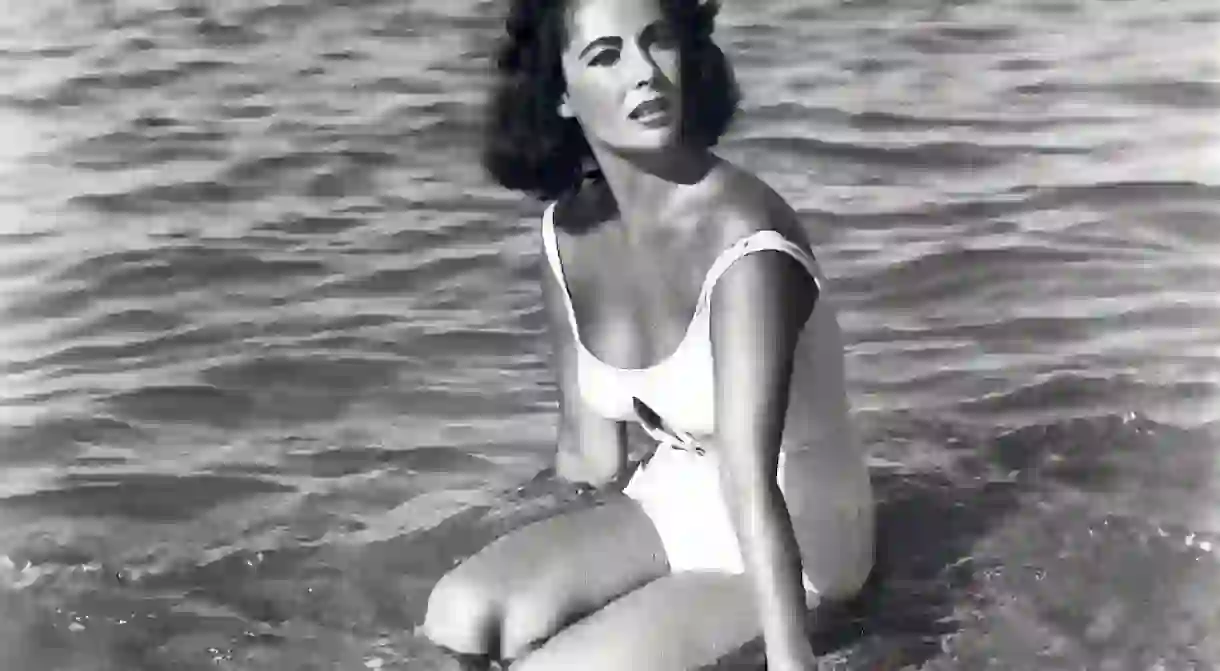The Quad Cinema Celebrates the Elemental Force of Elizabeth Taylor

The 20-film retrospective Essential Liz reveals how the star’s formidable strength was in a class of its own.
With due deference to Hollywood’s current twenty- and thirtysomething women stars, it is difficult to think of one who consistently plumbs the same deep reserves of power manifested by Elizabeth Taylor (1932-2011) at her peak from 1956 through 1970. Susan Sarandon and Jessica Lange showed hot mettle in their thirties, but which young actresses now now can be relied upon, film in and film out, to deliver anything of Taylor’s controlled thunder and lightning?

Even before Taylor, only Bette Davis and Barbara Stanwyck were regularly indomitable—Joan Crawford looked stern and angry (often without meaning to), but she often played the vulnerable card. Meryl Streep and Helen Mirren have resourcefully played strong women over the years while seldom summoning the kind of fire Taylor showed in Cat on a Hot Tin Roof (1958), Who’s Afraid of Virginia Woolf? (1966), and The Taming of the Shrew (1967). In August: Osage County (2013), Streep echoed the sardonic, spiteful Taylor of Who’s Afraid of Virginia Woolf?
There are reasons, of course, why fierce women in the movies remain rare. Hollywood (and European) cinema is still dominated by male writers and directors. Inevitably, they shrink from creating roles of women who, to put it bluntly, bust balls as assiduously as did Taylor’s Maggie in Cat on a Hot Tin Roof and Martha in Who’s Afraid of Virginia Woolf? (The latter is the most ferocious emasculator in serious American film drama.) This absence reinforces the suspicion that the so-called ‘strong woman’ written for Hollywood by men these days is a marketing tool—observed to please a demographic—rather than a deeply felt character.

Having played the rapturous, passionate child and adolescent of Lassie Come Home (1943) and National Velvet (1944), London-born Taylor did not captivate audiences again until she appeared as the socialite in love with Montgomery Clift’s character in A Place in the Sun (1951), which opened when she was 19. As the lady of the ranch in Giant (1956), Taylor was newly glamorous—she aged exquisitely in that film, too. By the late ’50s, it was agreed she was the most regal beauty in Hollywood.
The films that followed, notably Cat on a Hot Tin Roof; Suddenly, Last Summer (1959); Butterfield 8 (1960); The Sandpiper (1965); and Reflections in a Golden Eye (1967) milked Taylor’s earthy lustiness. Her casually promiscuous characters in Butterfield 8, The Sandpiper, and Reflections in a Golden Eye were immoral women by the standards of the day. Today, it seem as if they prophesied the right, now regarded as incontrovertible in the West, of a woman’s right to act on her sexual freedom.
Whereas Marilyn Monroe affected desirability on screen, Taylor embodied concupiscence proudly. More than any of her peers, she was the actress who pre-emptively tore away the bonds laid bare by Betty Friedan in her feminist text The Feminine Mystique (1963). Though Cleopatra(1963) revealed that even Liz could be a hollow clotheshorse, in fairness she suffered near-fatal pneumonia and the scandal of her affair with Richard Burton during production. Their subsequent teaming on The Taming of the Shrew predates Nicole Kidman and Tom Cruise’s marital psychodrama in Eyes Wide Shut (1999).
Among the Elizabeth Taylor films in the Quad Cinema’s retrospective are some that are seldom seen, including The Only Game in Town (1970), Ash Wednesday (1973), and The Driver’s Seat (1974). These three were made when the star was past her best, but they all have something to say about a woman’s self-image. It has been under-appreciated how the films of this great star frequently addressed issues of feminine identity—fierce or otherwise.
The films mentioned in this article are screening at the Quad Cinema on the following days in June:
Cat on a Hot Tin Roof 21
Who’s Afraid of Virginia Woolf? 23, 25
The Taming of the Shrew 24, 26
National Velvet 20, 24
A Place in the Sun 20, 22
Giant 22
Suddenly, Last Summer 21
Butterfield 8 29, 30
The Sandpiper 23, 25
Reflections in a Golden Eye 27, 28
Cleopatra 24
The Only Game in Town 27, 29
Ash Wednesday 25, 30
The Driver’s Seat 30
Other screenings:
Boom! 28, 29
The Comedians 23, 30
Father of the Bride 20, 21
Secret Ceremony 26, 28
The V.I.P.s 23
X, Y and Zee (aka Zee and Company) 26, 27
Quad Cinema, 34 West 13th Street, New York, NY 10011. +2122552243.













